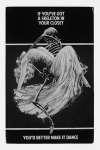William
Kentridge
South African artist William Kentridge has revolutionised the Contemporary Art world with his distinctive animated films and multidisciplinary approach. His work, deeply rooted in the socio-political landscape of his homeland, has garnered international acclaim. If you're looking for William Kentridge original prints and editions for sale or would like to sell, request a complimentary valuation and browse our network's most in-demand works.
William Kentridge art for sale
Discover William Kentridge prints for sale, exclusively available through our private network of collectors. Explore signed and unsigned screenprints, lithographs, digital prints, and rare editioned proof prints by era-defining blue chip artists.
Sell Your Art
with Us
with Us
Join Our Network of Collectors. Buy, Sell and Track Demand
Biography
Born in 1955 to anti-apartheid lawyers, Kentridge's upbringing in South Africa instilled in him a critical awareness of racial injustice.
Kentridge's artistic journey began with studies in Politics and African Studies at the University of the Witwatersrand, followed by a diploma in Fine Art at the Johannesburg Art Foundation. This educational background laid the foundation for his multifaceted artistic practice, which blends visual art, film, and performance.
Since the late 1970s, Kentridge has dedicated much of his time to creating “moving pictures”, using a method rooted in his handmade charcoal drawings. Rather than relying on computerised effects, Kentridge works meticulously with a drafting table and camera, reworking his drawings frame by frame. The process of erasure becomes as significant as the drawings themselves, leaving visible traces of changes and revisions, allowing both the figure and the creative act to coexist and evolve throughout the film's production.
Kentridge's artistic career gained significant momentum during the 1980s and 1990s, paralleling South Africa's shift from apartheid to democracy. His Drawings For Projection film series (1989-2020), featuring the characters Soho Eckstein and Felix Teitlebaum, delves into themes of guilt, complicity, and social transformation.
Created without scripts or storyboards, these films evolved organically through images and ideas that emerged during the drawing process. The smudged and imperfect erasures in each work reflect the passage of time, capturing the slow, thoughtful progression of both the artwork and the political landscape it mirrored.
In 1997, Kentridge's international reputation was cemented with his participation in Documenta X in Kassel, Germany. This exposure led to numerous solo exhibitions at prestigious institutions worldwide, including the Museum of Modern Art in New York and the Louvre in Paris.
Kentridge's artistic practice expanded beyond animation and drawing to encompass theatre and opera productions. His groundbreaking restaging of Mozart's opera The Magic Flute and Shostakovich's The Nose demonstrated his ability to bring his visual language to the stage.























